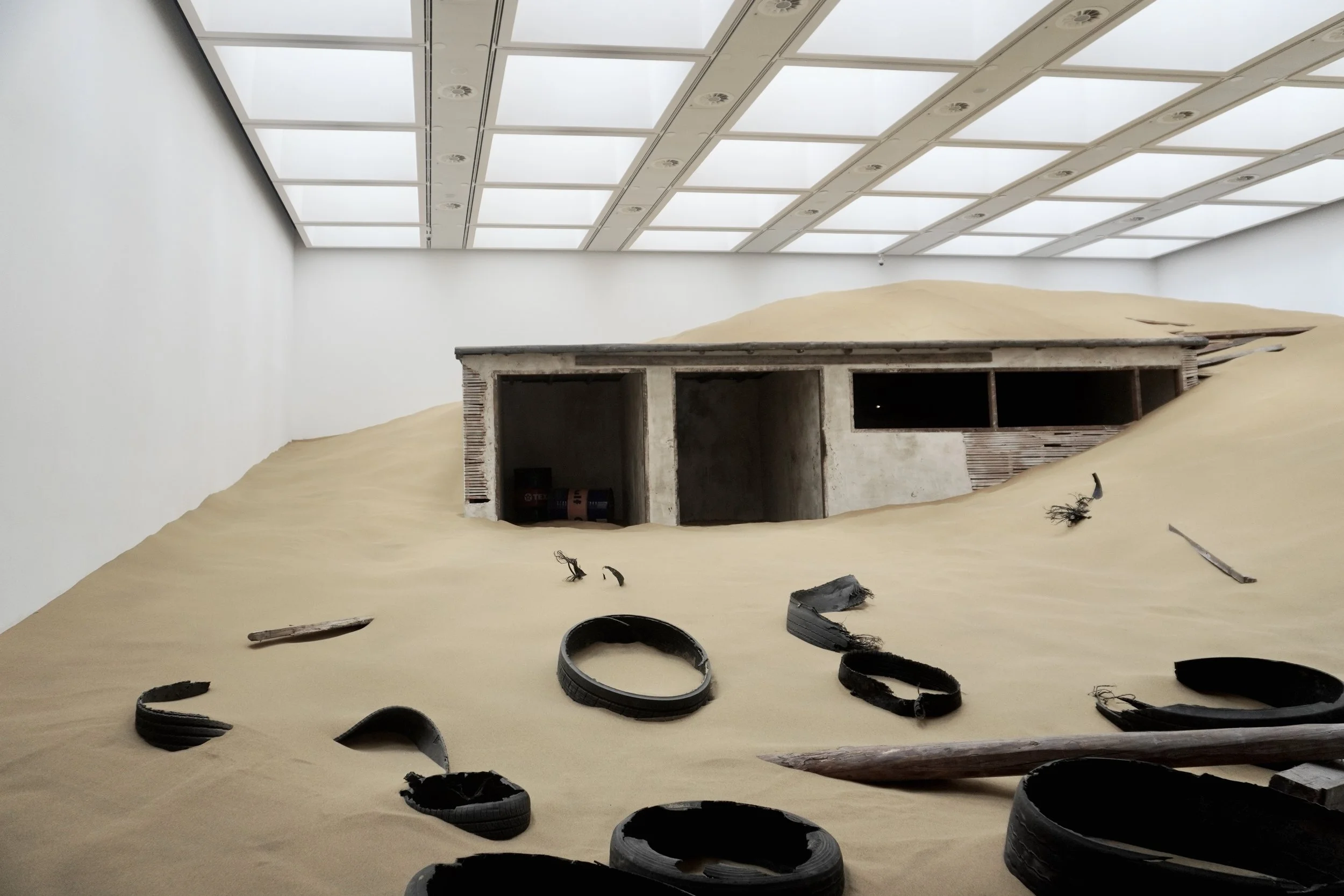Environment & human existance
In exploring human existence, we are often confronted with the profound impact of our environment and the intricate interplay between biology and psychology. From the pioneering work of Waddington (1940) on epigenetics to contemporary studies by Nessa Carey (2015) on environmental influences, the scientific community continues to unravel how external factors shape our genetic expression and behavioural patterns.
Photograph taken at White Cube, London.
Carey's experiments with mice exemplify this dynamic interaction: exposing a male mouse to a conditioned stimulus resulted in subsequent generations inheriting a fear response, highlighting the lasting effects of environmental conditioning. Such studies underscore organisms' adaptability and provoke reflection on our susceptibility to external influences.
In the field of psychology, conservation and environmental psychology provide deeper insights into human behaviour within environmental contexts. Saunders et al. (2006) underscore the critical role of human behaviour in biodiversity conservation, urging us to reconsider our relationship with nature and adopt sustainable practices. This research has direct implications for our daily lives, highlighting the importance of our actions in preserving the environment.
Photograph taken at South Bank Centre, London.
Kurt Koffka (1935) further expands this discourse by distinguishing between the geographical environment and the behavioural environment, illustrating how our perceptions and interpretations shape our interactions with the physical world.
Reflecting on Maslow's (1943) hierarchy of needs, which outlines the stages of human motivation from physiological necessities to self-actualization, we recognize the inherent complexities in striving for sustainability amidst diverse individual contexts. Uzzell and Rathzel (2009) aptly critique the challenges posed by societal norms and economic structures in fostering sustainable behaviours, prompting a broader contemplation on systemic change versus individual responsibility.
Photograph taken at Berlin, Germany.
As we delve into these concepts through photography and videography, capturing moments that reflect the essence of human existence, we invite contemplation on the nuanced relationship between humanity and its surroundings. Each image and video serves as a visual testament to these ideas and a catalyst for dialogue and introspection.
Through this visual journey, we aspire to ignite curiosity, provoke thought, and inspire action towards a more harmonious coexistence between humans and their environment.
Video taken at The Design Museum, London.
Bibliography
Koffka, K. (1935). Principles of Gestalt psychology. New York: Harcourt, Brace & World.
Saunders, C., Brook, A., and Myers, O. (2006). Using psychology to save biodiversity and human well-being. Conservation Biology, 20, 702-705. Available at: http://dx.doi.org/10.1111/j.1523-1739.2006.00435.x [Accessed: 12 January 2023].
The Royal Institution. (2015). What is Epigenetics? - with Nessa Carey. Available at: https://www.youtube.com/watch?v=9DAcJSAM_BA [Accessed: 23 November 2022].
Uzzell, D., and Räthzel, N. (2009). Transforming environmental psychology. Journal of Environmental Psychology, 29(3), 340–350. Available at: https://doi.org/10.1016/j.jenvp.2008.11.005 [Accessed: 18 January 2023].
Waddington, C. (1940). Organisers and Genes. Cambridge: The University Press.


